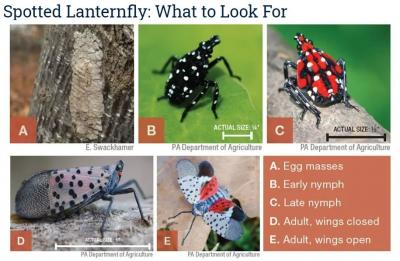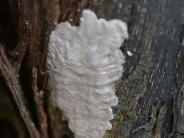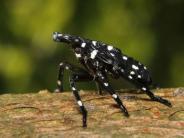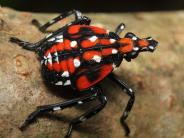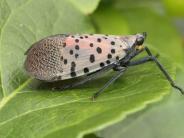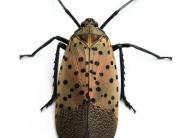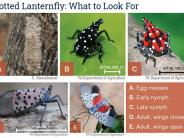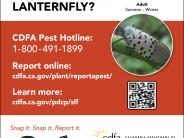Pest of Concern -- Spotted Lanternfly
The Spotted Lanternfly (Lycorma delicatula) is native to China and was first detected in Pennsylvania in September 2014. Spotted lanternfly feeds on a wide range of fruit, ornamental and woody trees, with tree-of-heaven being one of the preferred hosts. Spotted lanternflies are invasive and can be spread long distances by people who move infested material or items containing egg masses. If allowed to spread in the United States, this pest could seriously impact the country’s grape, orchard, and logging industries.
Adult Spotted Lanternflies are an inch long and ½ an inch wide at rest. The forewing is gray with black spots of varying sizes and the wing tips have black spots outlined in gray. Hind wings have contrasting patches of red and black with a white band. The legs and head are black, and the abdomen is yellow with black bands. Early instars (immature stages: 1st, 2nd, and 3rd instar) are black with white spots. By the last immature stage, the 4th instar, they develop red patches in addition to the black color with white spots. This is the last immature stage before they mature into an adult. Both the immature insect and the adult are quite visually striking. Adults are especially so when they have been startled and expose the bright red coloration on the hind wings. When the adult is at rest, particularly on the trunk of the tree of heaven, their gray, spotted color may actually cause them to blend in with their surroundings. Freshly laid egg masses appear as if coated with a white substance. As they age, the egg masses look as if they are coated with gray mud, which eventually takes on a dry/cracked appearance. Very old egg masses may look like rows of 30-50 brown seed-like structures aligned vertically in columns. Coated egg masses may look like "weird spongy moth egg masses", an insect also spreading in the Eastern United States and subject to quarantine by California.
(adapted from the UMass Spotted Lanternfly Fact Sheet, Photos below provide by extension.psu.edu)

